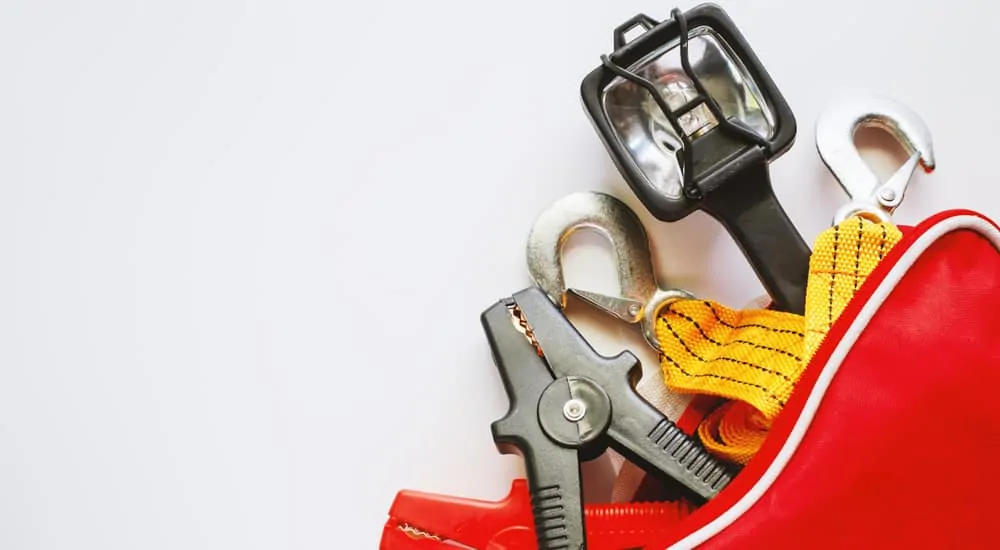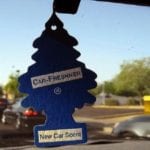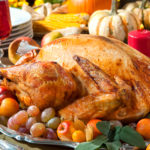There are lots of things to consider when you’re shopping around for used Fords for sale. How to finance, which dealership to choose, and—of course—what kind of used Ford you want to drive are all important to think about. But once you’ve got the keys in hand and drive off the lot, you’ll want to make your time on the road as safe as you possibly can. Keeping your car well stocked for emergencies may not be at the top of your list right now. The day you need that safety kit, though, you’ll be patting yourself on the back for putting it together. Do your future self a favor, and take a while to prep for unforeseen emergencies while you’re scoping out used Fords for sale. Trust us: You’ll be so glad you did.
In Case of Breakdowns or Maintenance Needs
You know what the Boy Scouts famously say: Be prepared. However, you may be less familiar with how the Boy Scout motto expands on this thought. It means “having thought out beforehand any accident or situation that might occur, so that you know the right thing to do at the right moment, and are willing to do it.” This slogan is especially useful when you’re traveling in an automobile. Add the following supplies to your emergency kit, so you’re ready for whatever life throws your way.
- Your car’s manual (should be located in the glove box)
- Fire extinguisher (small five-pound model, rated for both Class B and Class C)
- Car escape tool (seatbelt cutter and window breaker), kept in the glove compartment for easy access when you need it
- Spare tire
- Canned tire inflator/sealant (such as Fix-a-Flat)
- Tire pressure gauge
- Carjack
- Lug wrench or tire iron, whichever makes sense for your tires
- Motor oil (at least one quart)
- Antifreeze (at least one gallon)
- Transmission fluid
- Jumper cables
- Emergency car battery charger/booster
- Spare car fuses
- Replacement windshield wiper blades
- Washer fluid
- Flares or triangular reflectors
- Utility/work gloves
- WD-40
- Towing strap or rope rated for up to 6,000 pounds
- Basic tool kit, including adjustable wrench, pliers, screwdriver, pocketknife, duct tape, and a multipurpose tool, such as a Swiss Army knife
- Shop rags or paper towels
- Disposable camera to document an accident (just in case your smartphone has lost charge)
- Survival and first aid reference manuals
In Case of Inclement Weather
When the weather turns blustery, or flash floods swell, you don’t always get fair warning to allow time for you to get off the road. In these situations, whether your car contains a well-prepared emergency kit can literally be a matter of life or death. If you get stuck in a snowdrift, for example, you may need to hunker down and wait for a blizzard to pass or kill some time while you wait for help to arrive. You’ll want to be sure you will stay warm, that you have all the food or water you and your family need, and that you can keep the lines of communication open with your family or emergency services. Don’t overlook this important element of your emergency kit, and use common sense. Drivers in some parts of the country won’t need winter weather gear.
- Ice scraper
- Blankets, sleeping bag, or Mylar space blanket
- Warm winter accessories, such as scarves, gloves, and hats—again, enough for the whole family or your maximum number of passengers
- Hand/foot warmers
- First aid kit, including any prescriptions or other medications your family, uses (such as insulin) along with the basics
- Nutritious, non-perishable food, such as granola, peanut butter, jerky, raisins, MREs, energy bars, and the like
- Plenty of bottled water and perhaps some sports drinks, such as Gatorade
- Paper towels and/or wet wipes
- Snow shovel, a collapsible or folding model to stow easily
- Bag of sand or kitty litter and/or cardboard or carpet squares
- Tire chains
- Tarp
- Two-way radio
- Battery-powered or hand crank-powered AM/FM/National Oceanic and Atmospheric Administration (NOAA) radio
- Charger for your cell phone
- Emergency car battery charger (in a blizzard, you’ll want to be sure you can continue heating your vehicle)
- Toiletries/sanitation needs, such as toilet paper, hand sanitizer, toothbrush and toothpaste, soap, feminine hygiene supplies
- Fine sandpaper—in a pinch, rub on windshield wiper blades to resurface them if damaged by ice or snow
- A few entertainment items to help maintain your sanity in case of a long stay, such as a deck of cards or books to read and toys or coloring books and crayons for children
- Backup batteries for all battery-powered items in your kit
- Matches or other fire-starting method, and a candle in a can so it can’t be blown out
- Diapers and wet wipes for small children
- Pet food, leash, water bowl, or any other supplies your animals may need
In Case You Must Continue on Foot
For one reason or another, you may need to strike out on foot to find assistance, fuel, or shelter. If you do, you’ll want to be sure you’re prepared to do so safely and comfortably. Make sure to have supplies for either everyone in your family or the maximum number of passengers your vehicle can hold.
- Maps
- Compass or handheld GPS unit
- No-spill gas canister
- Binoculars
- Canvas bag or collapsible nylon bag—so you can bring vital supplies if you must continue on foot
- Sunblock
- Lip balm
- Battery-powered fan
- Wide-brimmed hat
- Face masks (in case of dust storm, forest fire, or smoggy conditions)
- Winter coats, raincoats or ponchos, socks, and sneakers for the whole family or your car’s maximum passenger count
- Umbrellas
- Flashlight or headlamps, with backup batteries aplenty
- Insect repellent
- Shoelaces, in case of breaks
- Change of clothes for all passengers—if your clothing gets wet in the winter, you could be at risk for hypothermia
In Case of Security Needs
These are the supplies you hope you won’t need—even more so than the other items we’ve listed in this article. But like the rest, if you should happen to have use for them, you’ll certainly be glad you thought ahead.
- Mace/pepper spray
- Whistle or other audible alert device
- Emergency phone numbers for your favorite local mechanic, towing company, your doctor, family or friends, car insurance company, and AAA if you’re a member—remember, your phone may lose charge, leaving you without your contacts
- Cash and coins for vending machines, fuel, or a hotel stay if power outage or other emergency has taken credit and debit card processing out of the equation
- Paper and pen (to record license plate numbers, exchange insurance information, jot down directions, leave a note on your dashboard, etc.)
Of course, your emergency kit is only as useful as your ability to confidently use the items in it. Be sure to thoroughly read the instructions ahead of time. In a real emergency, you may not have the time to read your car’s manual or check the instructional label on your fire extinguisher as a blaze rages on. Prepare yourself just as you’ve prepared this kit so that, like the Boy Scouts say, you’re ready for whatever life throws at you.



